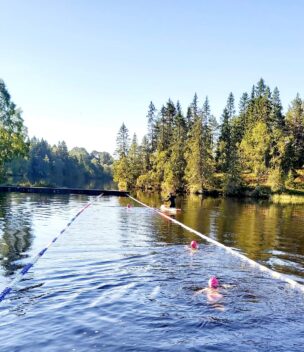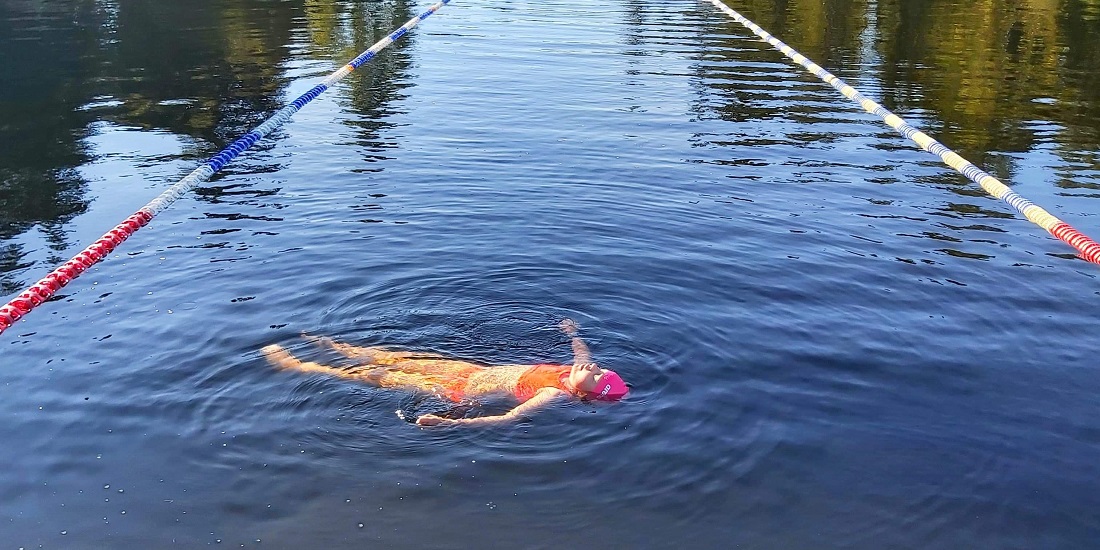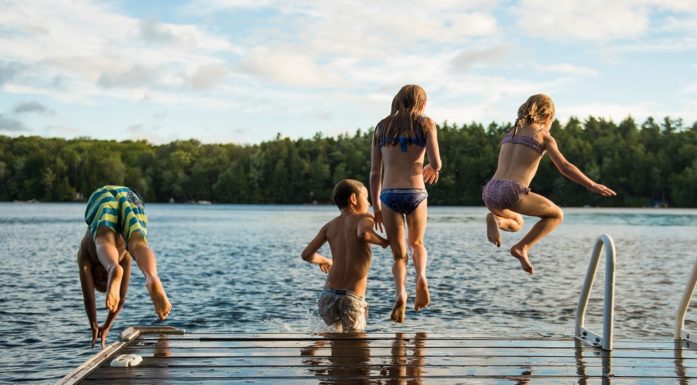Does being a proficient swimmer mean you are safe in the water?
Swimming instruction in Norway takes place almost exclusively in calm and controlled indoor swimming pools. But most water-related accidents occur outdoors, meaning the skills children have learned may not be enough.
In brief:
- Swimming instruction in Norway mainly takes place in controlled pool environments. But there is a big difference between swimming inside and in natural, unpredictable environments such as lakes, rivers and oceans.
- New research from NTNU shows that far fewer children are considered capable swimmers outdoors than in pools. This challenges current practices and views on swimming skills.
- The researchers call for a more realistic and holistic approach to swimming instruction. It must include knowledge, attitudes and experience with outdoor conditions.
- Lack of competence among teachers and practical challenges mean that many students still do not receive the necessary outdoor training, despite the fact that the curriculum allows for it.
This summary was created using AI. It has then reviewed by a member of the editorial team.
Learning to swim is important, especially in a country like Norway, where many people live near the coast, a river, or a lake. For this reason, swimming instruction is included in the physical education curriculum in primary and lower secondary schools.
But does the swimming instruction children in Norway receive actually help when the knowledge and skills are needed the most?
“In Norway, swimming instruction mainly takes place in stable, controlled and predictable environments, such as heated swimming pools,” explained Jon Sundan at NTNU’s Department of Teacher Education. He is an assistant professor and has recently completed his PhD.
It is all well and good that pupils receive this instruction – they get to practice falling into the water, swimming both on their front and back, floating, basic diving and getting out of the pool.
However, Sundan points out that this is not enough – it is just a start to make them safer and better able to cope in the water.
“Today’s swimming instruction helps pupils acquire basic swimming skills. But does it prepare children sufficiently for the kinds of challenges they might encounter in dynamic and unpredictable water environments, such as lakes, rivers and the sea, which are instrumental from a drowning prevention perspective?” he asked.
App for swimming instructors
- The free"Water Competence" app provides assistance with swimming and lifesaving training. It is aimed at teachers, instructors and interested parties at all levels.
- The app was developed by NTNU in collaboration with the Norwegian Swimming Association.
- More than 80 countries have used the app. Several partners from around the world share their films here.
- The app is available for both iOS and Android. You can find it by searching for "Water Competence".
- The app is free thanks to supporters such as Innovation Norway, the DNB Foundation and NTNU Discovery.
Cold water is not the same as a heated pool
Swimming in a warm indoor pool in your swimming trunks is a completely different experience from falling into a cold fjord, lake, or river, perhaps in the dark with all your clothes on, and having to try to figure out what to do in this particular situation.

It’s a completely different experience to swim in a warm indoor pool in your swimsuit than it is to fall into a cold fjord, lake or river. Photo: Nina Merete Lyngstad
“Most drowning accidents occur in natural environments, where currents, low water temperature, waves and limited visibility make self-rescue significantly more challenging,” explained Monika Haga, Professor of Physical Education and Sports at the same department.
She has been Sundan’s PhD supervisor. They have now published an article in Physical Education and Sport Pedagogy. It investigates the relationship between swimming skills in a pool and in a lake. The work was carried out by Sundan, Haga and Professor Håvard Lorås.
A big difference between swimming indoors and outdoors
“When we tested a group of children, noticeably fewer of them were categorized as proficient swimmers in a lake compared to what they were able to do in a pool,” said Sundan.
To assess swimming skills, they used the Swimming Competence Assessment Scale, which is based on the Norwegian standard for swimming proficiency.
“In the pool, approximately 8 out of 10 pupils had sufficient basic swimming skills, meaning they were proficient swimmers; but outdoors, this was reduced to approximately 3 out of 10,” said Sundan.
According to the researchers, the study provides valuable insight and challenges current practice.
“We simply have to acknowledge that swimming varies according to the water environment in which it is done. One of the measures to reduce the differences between indoor and outdoor swimming could be to ensure that indoor practice is more representative. This means it more closely resembles the conditions in natural aquatic environments. In addition, it is crucial that pupils practice swimming outdoors. This is stipulated in the physical education curriculum, especially at the upper primary and lower secondary levels,” said Sundan.
-
- You might also like: Important for kids to practice swimming outdoors
All pupils must practice swimming outdoors
Things have changed a little in recent years. More people, including central authorities, have become aware that it is important to practise swimming in more natural environments. The academic community at NTNU has been a driving force in calling for outdoor swimming and lifesaving education to be made part of the curriculum.
In practice, however, it will be some time before all pupils receive this type of instruction. This is partly because the teachers themselves lack the necessary competencies and experience.
“Our results show that we still need to take a more comprehensive approach to swimming instruction. In addition to the skills aspect, it must also include knowledge about and attitudes towards being in, near and on water. Our research shows that children cannot just learn to swim in a pool; they must also be better equipped to handle the complex challenges they may face in various outdoor water environments,” concluded the researchers.
- Teacher’s guide (in Norwegian): A guide for water safety instruction in, by and on the water, and school swimming instruction
Reference:Sundan, J., Lorås, H., & Haga, M. (2025). Environmental constraints: a comparative analysis of children’s swimming competence in different aquatic environments. Physical Education and Sport Pedagogy, 1–19. https://doi.org/10.1080/17408989.2025.2512754



